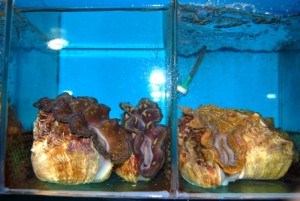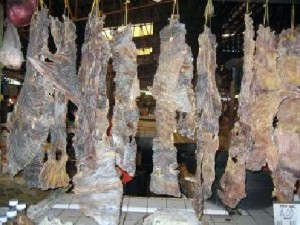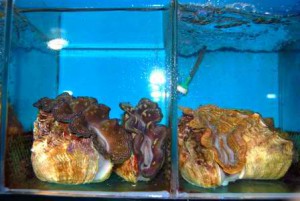By GREGORY PAUL H. YAN
(Conclusion)

TO BE sure, local and international demand for endangered seafood species drives the flourishing illegal marine trade. But there is a second and just as important reason: difficulty of authorities to go after those who break the law.
“The PNP (Philippine National Police) has 120,000 officers deployed throughout the country, so there’s one policeman for every 800 Filipinos. Factor in all other crimes and the fact that most detachments are underpaid, underequipped and undermanned and you’ll be left with enforcers who may or may not know that wolfing down a meal of steaming pinangat made from Manta Rays after a long day is illegal,” said World Wide Fund for Nature (WWF –International) fisheries expert Dr. Jose Ingles.
“Or,” he added with a pause, “they may not anymore care.”
The same problem faces the Philippine Navy and Coast Guard, with a combined strength of about 29,400 troops and sailors. The Philippine archipelago, the world’s second largest, spans more than 300,000 square kilometers, with an additional 36,289 kilometers of coast—the fifth longest worldwide.
“How can you police all of this daily?” Ingles said. “So long as there are people willing to pay top dollar or a decent amount of pesos for a product, there will be many others willing to defy the law to provide it.”
Poverty is undoubtedly a root cause. World Bank and Social Weather Stations estimate that two in five Filipinos live below the poverty line. Hunger incidences affect nearly a quarter of the population.
Half of all Filipino communities are situated by the coast, with many depending on the sea for food and livelihood. The country has 1.6 million officially registered fisherfolk, “Though for every registered boat, you have two to three more who fish or gather seafood on a part-time basis,” Ingles said.
While poverty continues to afflict Philippine coastal communities, other Asian countries are rapidly increasing in affluence. China has been posting a double-digit growth rate since 2009, the fastest-growing major economy in the world today. With increased affluence comes increased purchase power. China is now the world’s second-largest importer of goods.
Demand for certain protected species at times has nothing to do at all with their taste, but with the pride and prestige, even luck, they supposedly bring to consumers.
“Shark fin really doesn’t taste very good. It’s the soup stock that gives it any flavor at all,” said Philippine shark and ray expert Joe Pres Gaudiano. “So why do consumers pay top-dollar for it? Because it is a matter of privilege—of pride even—to be able to say that you have served a bowl of P10,000 soup to your guests.”
Red groupers for instance, are more expensive than brown ones. A restaurateur in Malaysia explained, “Easy. Because red is a lucky color for the Chinese.”
Because of the strong demand for seafood, legal or otherwise, supplies are dwindling and the repercussions to overfishing severe, warned Ingles.
Citing World Bank estimates, he said at least half the entire planet’s fish stocks have been overexploited.
For example, fishers in the 1970s used to fish for Mameng and Lapu-Lapu only in the Philippines, in the South China Sea. In the 1980s dwindling wild stocks and soaring demand drove fishers to expand the area into Malaysia, Indonesia and the coast of Vietnam. Today, suppliers go as far west as South America and as far east as the fringes of the Pacific Ocean.
“Still, there’s not enough top-level seafood to go around, which is why a meter-long Mameng can be sold at P60,000. Consumers are willing to pay, and suppliers are willing to scour as many Philippine reefs as is necessary to continue the trade,” said Ingles.
As part of the hugely productive region of the Earth termed the Coral Triangle, Philippine seas are in theory incredibly productive. A single square kilometer of healthy reef has been known to generate up to 40 metric tons of seafood per year.
In the famed Tubbataha Reefs off Palawan, where Lapu-Lapu can be as large as sedans, up to 300 metric tons have been recorded. Left in good condition, Philippine coral reefs have shown a strong ability to regenerate and provide.
But many fishing methods, including those used to capture Mameng, are destructive. Cyanide and dynamite fishing, coral and clam gouging, targeting juveniles and spawning aggregations plus basnig or strobe-light fishing are just some methods used to capture quarry.
Destructive commercial and artisanal fishing from the 1960s onwards has left Philippine reefs in a dismal state. Less than 5 percent of the country’s coral reefs remain in excellent condition. Just 1 percent remains pristine, seriously affecting seafood productivity. This is compounded by the fact that most endangered fish are top-level predators.
“Tuna, Lapu-Lapu, Mameng, sharks, dolphins and whales are all large, top-tier species. To sustain one shark, for example, you need perhaps 100 smaller fish to feed it. When you take out the shark, populations of the smaller fish will boom and wipe out populations of all those below them,” Ingles said. “In short, the entire marine food chain will unravel, eventually destroying the productivity of our seas.”

WWF is now urging Filipino seafood connoisseurs to choose simple and similar alternatives to endangered seafood as an important first step in saving these species.
Simple general guidelines include eating cultured over wild-caught fish, freshwater over marine fish, adults over juveniles, oysters or mussels instead of giant clams, Yellowfin or Bigeye Tuna instead of sharks or rays and most importantly, Lapu-Lapu instead of Mameng.
In recent years, the newly introduced “Cream Dory” that is raised in farms has emerged to be a popular alternative.
Introduced to the Philippines from the slow-flowing giant Mekong River, the High-fin Hammerhead Shark (Pangasius hypophthalmus)—it is not a true shark—is proving to be a cheap and delectable source of protein. Its commercial name has been carefully construed to give it an upscale image. With its public acceptance comes a breather for other “white meat” fish species such as snappers and grouper.
But Ingles said, “Alternatives will only be truly viable if they do minimal harm to our endemic species and waterways. What we do not want is another outbreak of Janitor Fish or Tilapia, both non-native fish which have invaded much of the country’s lakes and rivers to seriously displace native fauna such as Biya (gobies) and Kasuswit (half-beaks).”
He also said farmed fish must be fed nothing more than grains or dried and recycled food. “To feed a one-kilo Bangus a kilo of other marine fish each month does not truly alleviate pressure on our oceans,” he said.
By shifting to more common species, seafood stocks are given time to recover.
Said Gaudiano, “The real issue is not about endangered species, or seafood conservation, or environmental laws. The real issue is food and our ability to safeguard the systems which can generate it for our growing population.”
Read the first part, Endangered ‘Mameng,’ protected species openly traded
(Gregory Paul H. Yan, a masteral student at the University of the Philippines College of Mass Communication and a Communications Officer for the World Wide Fund for Nature-Philippines, wrote a longer version of this report for his Investigative Journalism class taught by VERA Files trustee Yvonne T. Chua.)
